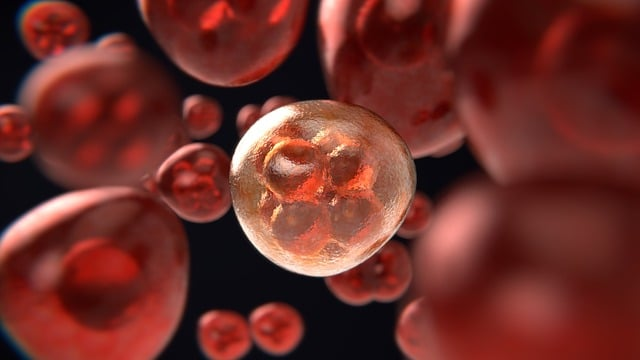Informed Consent in Medicine: The Story of Henrietta Lacks Ethics Dilemma

70 years after the medical research community unethically took human cells from Henrietta Lacks without obtaining consent when she had visited Johns Hopkins Hospital for cervical cancer, her descendants have finally settled with a biotech company that they accused of profiting from the cell line. This case highlights significant violations of biomedical ethics, particularly the principles of respect for autonomy, non-maleficence, beneficence, and justice, as Tom Beauchamp and James Childress outlined in their book Principles of Biomedical Ethics.
The Lacks family, after the immortal life of Henrietta
Decades after Henrietta Lacks’, her immortal cell line launched modern cell line research, and her family today honors her legacy while advocating for ethics in science. This advocacy emphasizes the importance of ethical decision-making in medical research, particularly in the context of informed consent and the use of human tissues. Though Henrietta Lacks did not consent to her cancer cells becoming the immortal Hela cells, cell line, her story transformed policies around tissue use. Before Rebecca Skloot’s 2010 book, the Lacks family knew little about Henrietta beyond her cells. But finally, learning about Henrietta Lacks as a mother and wife was deeply meaningful.
Lacks’ granddaughter, Jeri Lacks-Whye, says the revelations provide a greater sense of her grandmother as a person, not just a scientific contribution. Skloot’s extensive research with Henrietta’s daughter, Deborah Lacks, gave insights into her deep curiosity over her mother’s life and confusion about HeLa cells. Deborah asked if studying the cells could disturb her mother’s peace in the afterlife. This exemplified the immense communication gap between scientists using Henrietta’s cells and her family, which lacked proper engagement.
Henrietta’s grandson Alfred Carter Jr. aided Skloot’s fact-finding from prison, further growing his admiration for his mother Deborah’s strength in pursuing the truth. Since then, he has continued her work by informing the public of his grandmother’s enduring legacy. In 2013, the National Institutes of Health established a review panel that included Lacks family members like Jeri Lacks-Whye in evaluating HeLa genomic research requests. This ensures the family knows how Henrietta’s cells are used while protecting their privacy. It represents progress in ethics and transparency.
Issues That Remain
However, issues remain around informed consent in tissue sampling, especially with marginalized populations. The Lacks family stresses that donors are human beings deserving of consideration and clear communication from researchers, not merely cell sources. Henrietta Lacks’ immortal HeLa cells will forever stand as symbols of exploitation in science’s past amid a lack of consent. Yet, thanks to advocates like her family, future practices can focus on voluntary participation, ethics, and humanity.
While the origins of cell lines like HeLa remain controversial, Henrietta’s living descendants now carry her memory and mission forward. Through their persistence, Deborah and her children transformed awareness of HeLa cells from research materials into representations of a remarkable woman. By openly conversing with the Lacks family, today’s scientists gain crucial perspectives on the people behind the samples that drive medicine.
Active engagement addresses the shocking exclusion the Lacks experienced when Henrietta’s cells were collected and distributed worldwide without acknowledgment. However, ongoing ethical dilemmas in informed consent and tissue sampling continue challenging the medical community, highlighting the need for continuous improvement in moral standards.
Lacks’ Cells Unethically Taken Without Informed Consent from Johns Hopkins Hospital

Medical records show that Mrs. Lacks came to Johns Hopkins Hospital to undergo radium treatments for her cervical cancer, which was the best treatment offered at the time. Ethical principles should guide clinical practice, ensuring patient consent and autonomy are respected.
The cancer cells were taken from her tumor for research purposes without obtaining consent, and her medical records show that she had the first “immortal” human cell line, and this was known as the HeLa cell line. This immortal cell line was discovered to have the ability to grow outside of the human body indefinitely for research purposes and replace research participants.
These cells had been cancer cells collected by tissue samples for further research. This research project on the HeLa cells was crucial for research as they contributed to developing many vaccines and treatments in modern medicine for various issues and diseases, including the polio vaccine, in vitro fertilization, and cancer treatments. The ethical principles violated in the case of Henrietta Lacks include the lack of informed consent and the disregard for her autonomy.
Life of Henrietta Lacks
Henrietta Lacks was born in 1920 in Roanoke, Virginia. When she was 4, her mother died in childbirth, and she moved with her father and siblings to Clover, VA. She was raised by her grandfather, Tommy Lacks, and her cousin, David “Day” Lacks. Lacks only attended school until 6th grade. At age 20, she married her cousin Day. The couple later moved to Turner Station, Maryland, so he could work at the Bethlehem Steel plant.
In Maryland, Lacks gave birth to five children. Lacks underwent a cervical cancer biopsy at Johns Hopkins Hospital, and that was when her aggressively replicating cells became mass-distributed through the work of Dr. George Gey. Though standard practice then, taking patient samples without permission violates modern ethics. Lacks never agreed to let her discarded tissues serve research purposes, an oversight that denied her autonomy over her cells and launched a scientific revolution. This case highlights the ethical responsibilities of the medical profession in respecting patient autonomy and consent.
Lacks’ Experience
Lacks’ experience revealed deep problems in how researchers obtained human cell lines, especially from minority populations, without transparency or consent from participants. Current regulations still allow broad research uses of cell lines if anonymity is maintained. However, Lacks’ case contributed to discussions on strengthening informed consent protections around human tissues. Though challenging to implement, requiring consent upholds ethics and recognizes research participants’ interests in cell lines that drive medical progress.
Efforts to compensate Lacks’ descendants acknowledge her lack of choice. As human cell lines remain vital for advancing biomedical science, Henrietta Lacks’ legacy powerfully demonstrates why voluntary informed consent must be at the heart of ethical research practices. The case also underscores the importance of adhering to moral principles, such as autonomy, in medical decision-making.
Informed Consent in Biomedical Ethics
Informed consent is a crucial ethical and legal healthcare process where medical teams educate patients about potential treatments and procedures, ensuring quality patient care. Yes, Informed consent requires patients to voluntarily decide whether to consent to procedures after assessing risks and benefits. Strong physician-patient relationships are essential in this context, as they foster trust and open communication. This upholds patients’ right to control their healthcare and medical records. Doctors must explain the procedure, discuss pros/cons, ensure comprehension, and document the informed consent process as per institutional review board policies.
Patients should feel empowered in decision-making, not pressured into provider-chosen options. Recommendations require clear rationale without downplaying patient autonomy and consent. Informed consent moved away from paternalistic models, where doctors decided treatments using patient samples and tissue alone, like in the case of the Henrietta Lacks cell line. Patients now actively engage in their care by evaluating transparent information from providers. This promotes collaboration between patients and medical teams. By exchanging vital context, they partner to make healthcare decisions based on voluntary, fully informed patient consent. This aims to enhance care experiences and outcomes.
Immortal Life of Lack’s changes culture indefinitely
The descendants of Mrs. Lack’s sued a biotech firm profiting from the HeLa cell line, by claiming unjust enrichment from unethical origins. The recent settlement in the Henrietta Lacks case spotlights issues of informed consent in medical research involving human cells and broader implications for health care ethics. The scientific discovery of the cells which became the immortal HeLa cell line, transformed medical research.
Despite Lacks never consenting, the medical research community widely used her cells and cell line for various research purposes such as biomedical research and biological research. Her cells proved uniquely resilient and continuously replicating. The lack of informed consent regarding Lacks’ medical records and tissue samples represented a glaring ethical violation. Hospital ethics committees are crucial in ensuring ethical practices in such cases. Despite HeLa’s research value, its origins highlighted the exploitation of minority patients and questionable cell collection practices.
By compensating Lacks’ family decades later, the biotech industry now recognizes its ethical obligations regarding informed consent and proper use of cell lines from past medical procedures. More scrutiny could come for commercial firms profiting from research initially done without patient permission. The Henrietta Lacks ethics case and the settlement may pressure biomedical institutions and companies to reassess consent policies and properly recognize the contributions of research participants.
This will highlight the ongoing need for ethics in obtaining and leveraging human cells, especially from minority populations. Attorneys say the settlement could spur more lawsuits against companies benefiting from cell lines like HeLa that originated absent informed consent. They aim to honor Lacks on what would have been her 103rd birthday.
Henrietta Lacks ethics case spotlights issues of informed consent
Life after Henrietta Lacks Medical Ethics story
The National Institutes of Health (NIH) has agreed with Henrietta Lacks’ family regarding access to the HeLa cell line genome data. HeLa, derived from Lacks’ cancer cells in 1951 without consent, was the first immortal human cell line. HeLa cells revolutionized medical research and supported innovations. However, the origins of the widely used cell line violated ethics around tissue sampling and consent, especially for minority patients like Lacks.
Following concerns from Lacks’ descendants over privacy risks from public genome data, NIH established a new policy for controlled access. It ensures the family has a role in proposed HeLa research while enabling scientific progress.
The unprecedented story of Henrietta Lacks’ cells continues influencing policy on ethics, patient rights, and recognizing donor contributions in biomedical science. Her immortal cells provide an important tool for research but highlight past wrongs in cell collection without transparency or choice. This story has also significantly impacted medical education, emphasizing the need to incorporate ethics into the curriculum. Ongoing reform aims to uphold consent, agency, and public partnership in genomics.
By listening to families like the Lacks’, research can prevent future exploitation and mistrust while still achieving lifesaving innovations. These ethical considerations underscore the importance of professional conduct in medical research, ensuring that guidelines for professional conduct and ethics are followed rigorously.
Immortal Life Cell Discovery
Immortal cell lines possess the unique capacity to undergo continuous division and proliferation in vitro. This indefinite replicative lifespan makes immortalized cells invaluable for research. Some immortal lines originate from naturally occurring cancers, like the HeLa cells derived without informed consent from Henrietta Lacks’ cervical tumor in 1951, raising significant questions about medical ethics. By evading normal senescence, Lacks’ cancer cells became the first human cell line to be continuously cultured long-term.
In the 1980s, HeLa’s genomic analysis revealed the HPV strain causing Lacks’ cancer. This led to HPV vaccines reducing cervical cancer rates today. Also, studying HeLa’s endless replication shed light on enzymes like telomerase that enable cellular immortality. Ethical considerations in medical practice are crucial, especially when using human tissues for research. HeLa’s immortality launched a transformation in medical science, fueling breakthroughs like polio vaccines and gene mapping.
However, the cell line’s origins also reveal the ethical cost of nonconsensual tissue sampling, particularly from marginalized patients. While immortal lines differ from stem cells that naturally avoid senescence during organismal development, both enable extensive cell division for research. Ongoing reforms aim to prevent unethical cell collection practices that marred the beginnings of immortal cell lines like HeLa, which contributed immeasurably to understanding cell biology and treating human disease.
Polio Vaccine
Decades after Henrietta Lacks’ cells launched modern cell line research, her family today honors her legacy while advocating for ethics in science. Though Henrietta did not consent to her cancer cells becoming the immortal HeLa line, her story transformed policies around tissue use and ethical considerations in research involving human subjects. Before Rebecca Skloot’s 2010 book, the Lacks family knew little about Henrietta beyond her cells. But finally, learning of her as a mother and wife was deeply meaningful.
Lacks’ granddaughter, Jeri Lacks-Whye, says the revelations provide a greater sense of her grandmother as a person, not just a scientific contribution. Skloot’s extensive research with Henrietta’s daughter, Deborah Lacks, gave insights into her deep curiosity over her mother’s life and confusion about HeLa cells. Deborah asked if studying the cells could disturb her mother’s peace in the afterlife. This exemplified the immense communication gap between scientists using Henrietta’s cells and her family, which lacked proper engagement.
Henrietta’s grandson Alfred Carter Jr. aided Skloot’s fact-finding from prison, further growing his admiration for his mother Deborah’s strength in pursuing the truth. Since then, he has continued her work by informing the public of his grandmother’s enduring legacy. In 2013, the National Institutes of Health established a review panel that included Lacks family members like Jeri Lacks-Whye in evaluating HeLa genomic research requests.
This ensures the family knows how Henrietta’s cells are used while protecting their privacy. It represents progress in ethics and transparency. The medical team is crucial in ensuring ethical research practices, emphasizing the importance of informed consent and respect for human subjects. However, issues remain around informed consent in tissue sampling, especially with marginalized populations. The Lacks family stresses that donors are human beings deserving of consideration and clear communication from researchers, not merely cell sources.
The Immortal Life Of Henrietta and her HeLa cells
The immortal life of Henrietta and her HeLa cells will forever stand as symbols of exploitation in science’s past amid a lack of consent with the common practice of medicine. Yet, thanks to advocates like her family, future practices can focus on voluntary participation, ethics, and humanity. While the origins of cell lines like HeLa remain controversial, Henrietta’s living descendants now carry her memory and mission forward.
Through their persistence, Deborah and her children transformed awareness of HeLa cells from research materials into representations of a remarkable woman. By openly conversing with the Lacks family, today’s scientists gain crucial perspectives on the people behind the samples that drive medicine. Active engagement addresses the shocking exclusion the Lack experienced previously when Henrietta’s cells were collected and distributed worldwide without acknowledgment.
Before Henrietta Lacks’s story and name became known, HeLa cells secretly fueled medical research and innovations like the polio vaccine. At Tuskegee University in the 1950s, Drs. Russell Brown and James Henderson pioneered methods for mass-producing HeLa cells to enable Jonas Salk’s polio vaccine development. But the cells came from a woman who never consented, spotlighting the ethics of using human cells in science.
The African American Community
Polio impacted African Americans despite racist notions of “immunity.” Activists like Dr. John Chenault exposed polio’s toll on Black communities and founded new treatment centers. The National Foundation for Infantile Paralysis (NFIP) opened the Tuskegee Infantile Paralysis Center in 1940 after pressure to aid Black polio patients. The finding of enough cells to test polio vaccines proved challenging.
Monkey cells were complex to source in sufficient quantities. Henrietta Lacks’ aggressively growing cervical cancer cells offered an ideal alternative. However, obtaining and distributing those cells without her permission violated basic consent principles. Based on their expertise, the NFIP chose Tuskegee University’s cell biology researchers Dr. Brown and Henderson to lead HeLa cell production. After specialized training, they received HeLa samples and worked intensely to optimize cell culture techniques.
The Tuskegee team innovated shipping methods to maintain HeLa viability in transit, employing insulated containers and temperature stabilizers. Precise protocols and quality control ensured reliable HeLa supplies to researchers through multiplying incubators. Within years, they distributed over half a million cultures globally.
Kept In the Dark
However, Henrietta Lacks and her family remained unaware of how her cells propelled scientific search after the life of Henrietta Lacks The profits made from Henrietta’s cells without acknowledgment represented egregious exploitation of a cancer patient. But her HeLa line’s role in aiding vaccines that saved countless lives also cannot be understated. By enabling Jonas Salk’s polio vaccine development through reliably supplying test cells, HeLa cells helped curb a prominent childhood disease. The 1954 polio vaccine rollout stemmed a public health crisis affecting millions worldwide. However, the lapse in ethics regarding Henrietta Lacks’ consent persisted for decades more.
Commercial firms like Microbiological Associates eventually took over the immortal cell line, HeLa production from Tuskegee. Yet the university’s scientists made terrific strides in optimizing cell culture techniques that are still employed today. They provided iconic early leadership in utilizing Henrietta Lacks’ immortal cell line for medical research.
However, the origins of biomedical advances cannot eclipse the human cost behind them. Henrietta Lacks was but one of many marginalized patients whose cells were taken without permission in the name of progress. Recognizing their uncredited contributions, as Rebecca Skloot’s book on Lacks later did, acknowledges past wrongs and the need to reform ethics policies.
HeLa Cells
HeLa cells will forever represent Henrietta Lacks’ legacy of enabling innovations ranging from gene mapping to vaccines. However, modern informed consent processes aim to ensure living patients have a choice in tissue usage. The rights and humanity of all who participate in research matter. The polio vaccine is one of many medical milestones Henrietta Lacks’ cells supported, even if she could not choose that path.
As science progresses ethically today, patients are research partners, not mere samples and data sources. By spotlighting past abuses, champions like Henrietta Lacks inspired vital protections so new generations can consent to contribute to science’s future.
Developments in Human Cells and Human Subjects
Unlike most human cells, HeLa cells can infinitely self-replicate. This allowed researchers worldwide to access a consistent supply to study and test theories. Over 75,000 studies have utilized HeLa cells since their discovery at Johns Hopkins Hospital. Taking patient cells without consent violated biomedical ethics, particularly the ethical principles of respect for autonomy and justice. Lacks only permitted medical procedures, not unlimited research use of her discarded tissues.
Nonconsensual cell collection exploited vulnerable patients and represented a gross oversight. Nevertheless, HeLa cells accelerated medical innovation through the past seven decades across disciplines:
- Vaccines – HeLa cells enabled Jonas Salk’s polio vaccine development and later COVID-19 vaccine research by allowing virus cultivation and infection observations.
- Cancer – HeLa cells helped prove HPV causes cervical cancer, aided chemotherapy drug trials like camptothecin, and revealed how thalidomide caused birth defects to better utilize it against cancers.
- HIV/AIDS – Infecting HeLa cells with HIV demonstrated the virus’s actions for developing HIV/AIDS medications.
- IVF – HeLa cell work by fertility science pioneer Howard Jones Jr. laid foundations for in vitro fertilization techniques.
- Genetics – Studying HeLa cells showed how telomerase repairs chromosomes, discoveries that earned two scientists the 2009 Nobel Prize in Medicine.
- Infectious Diseases – Salmonella and other bacterial infection experiments relied on HeLa cells to understand transmission and discover treatments.
- Radiation – Testing HeLa cells revealed how X-ray radiation can damage cells and pose cancer risks, improving safety.
Ethical principles such as non-maleficence and benevolence should be upheld in medical research to ensure patient welfare and integrity.
Though transformational for modern medicine, HeLa cells always represented the injustice done to Henrietta Lacks and patients like her. Lacks died without ever knowing her cells spawned billions in profits and scientific renown.
By propelling so much research, the HeLa cell line highlights the urgent need for ethics in obtaining and using human bio samples. Though anonymization was once standard, Lacks’ experience exposed deep problems in exploiting tissue donations without consent, especially from marginalized groups. HeLa cells will forever epitomize the moral cost of unchecked cell collection alongside the value of biological materials for advancing science.
Lacks’ involuntary contribution spurred reforms requiring transparency and permission for tissue usage today. Her immortal cells remind all that human dignity and agency matter dearly in ethical research.
Related Terms: Medical care, ethical issues, research ethics, medical professionals













